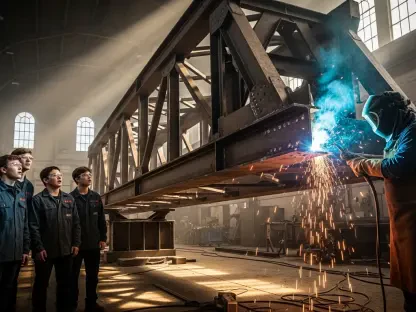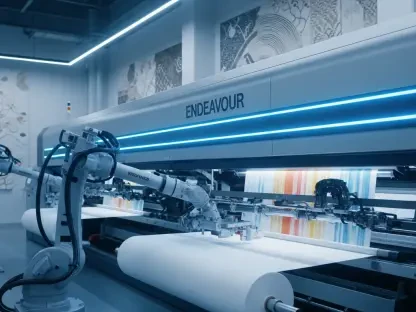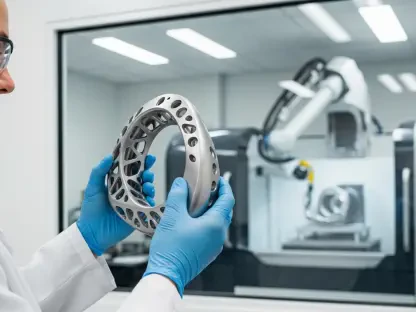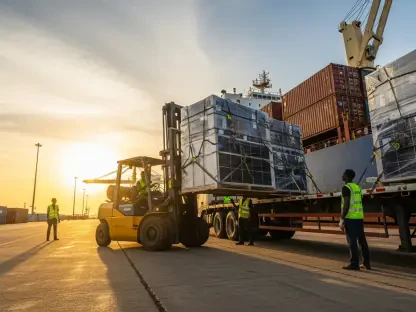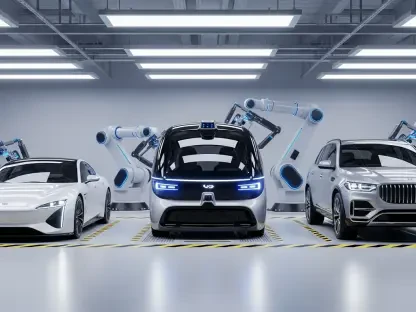The manufacturing sector is currently undergoing a dramatic transformation fueled by AI-powered digital twins, a technology highlighted in the recent Digital Twindex report by Tata Consultancy Services (TCS). Unveiled at Hannover Messe in Germany, the report underscores the capabilities of AI-driven digital twins in enhancing manufacturing efficiency, adaptability, and resilience. Drawing insights from key industry players like Siemens, Schneider Electric, NVIDIA, and JLR, the report provides a forward-looking perspective on the adoption and impact of these technologies.
Current State of the Manufacturing Industry
Moving Beyond Industry 4.0
The manufacturing landscape has been evolving, driven by advancements in technology and market demands. While Industry 4.0 focused on automation and data exchange, the sector is now transitioning towards Industry 4.5. This phase is characterized by the integrated use of AI, automation, and digital twins to create anticipatory and adaptive enterprises. These developments are set to redefine industry competitiveness and improve global community life.
Real-Time Data Fabric
The role of digital twins in manufacturing cannot be overstated. Serving as the connective tissue for enterprise intelligence, digital twins synchronize data in real-time, providing predictive insights and enhancing operational resilience. This synchronization forms the backbone of smarter manufacturing processes, facilitating rapid decision-making and efficient production.
Detailed Analysis of Industry Trends and Forecasts
AI as the Orchestrator of Intelligence
AI systems are becoming increasingly sophisticated, capable of orchestrating simulations, optimizations, and decisions across the manufacturing value chain. This shift toward decentralized, plug-and-play production models, powered by AI and digital twins, enables hyper-localized and responsive manufacturing at scale. The integration of these technologies allows for seamless interactions and efficient production cycles, pushing the boundaries of current manufacturing capabilities.
The Human-AI Symphony
AI technology is designed to enhance human capabilities rather than replace them. By supporting better decision-making, improving safety measures, and enabling seamless collaboration between humans and intelligent systems on the factory floor, AI creates a harmonious workflow. This integration of human expertise and machine intelligence leads to more efficient and safer production environments.
Modular and Intelligent Manufacturing
The current trend towards modular and intelligent manufacturing represents a significant shift in the industry’s approach. This method allows for flexible, responsive production processes that can be quickly adapted to meet changing demand. By leveraging digital twins, manufacturers can implement decentralized production models, resulting in increased efficiency and reduced production times. This trend is expected to continue, further driving innovation and efficiency in manufacturing processes.
Report Findings and Future Outlook
Virtual Testing of Digital Twins
A crucial first step for manufacturers aiming to embrace AI and automation is digitization. Virtual-first testing using digital twins helps build resilient and autonomous systems by refining AI-powered processes in a controlled environment. This approach minimizes errors and boosts efficiency in production, ensuring that real-world implementations are robust and effective.
Bridging Digital and Physical Realms
Simulation environments are critical for developing and validating physical and industrial AI before deployment in the real world. This bridge between the digital and physical realms paves the way for software-defined manufacturing and intelligent, autonomous systems. As a result, manufacturers are better equipped to lead the industry with innovative, future-ready solutions.
Risks of Delayed Adoption
The report warns that delayed adoption of AI and digital twin technologies poses a significant risk to manufacturers’ competitiveness. Manufacturers who fail to digitize processes and adopt AI-driven optimization may struggle to keep pace with industry advancements, risking their market position. Embracing these technologies is essential for maintaining a competitive edge and ensuring long-term success.
Vision for Intelligent Enterprises
For manufacturers to evolve into future-ready enterprises, it is imperative to fully embrace AI and digitization. The insights from the TCS Digital Twindex report highlight the importance of these technologies in navigating the complexities of the modern manufacturing landscape. By leveraging AI-powered digital twins, manufacturers can position themselves for new industry leadership and sustainable growth.
Conclusion
The findings of the TCS Digital Twindex report shed light on the transformative potential of AI-powered digital twins in the manufacturing industry. Digitizing processes, adopting AI-driven optimization, and leveraging virtual testing emerged as critical steps for building resilient systems. Human expertise remains central, combining with AI to enhance capabilities. The risks of delayed adoption underscore the urgency for manufacturers to embrace these technologies. Moving forward, the strategic guidance from industry leaders will be instrumental in navigating the AI and digital twin-driven era, ensuring future-ready, competitive enterprises.


